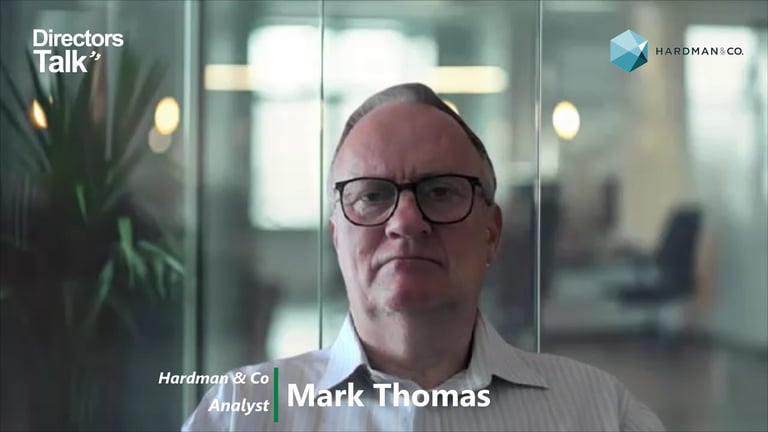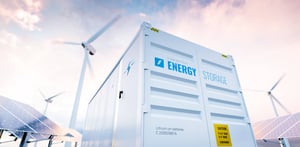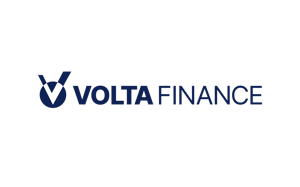Phoenix Copper Ltd (LON:PXC) is the topic of conversation when Hardman and Co’s Analyst Paul Mylchreest caught up with DirectorsTalk for an exclusive interview.
Q1: Can you give us an overview of Phoenix Copper Ltd?
A1: Phoenix is primarily a copper mining exploration company, although it also has nearby two cobalt properties. It has been listed on AIM since 2017.
Its flagship project – Empire – is a potentially world-class copper mine based near the town of Mackay in Idaho in the northern US. Jurisdiction is always critical in mining and it’s worth noting that Idaho is notably “mining-friendly” – in the Mining Journal’s 2018 “Risk Report”. Idaho was ranked number one in terms of the lowest risk perception in world mining.
The acquisition of the initial Empire claim followed an extensive period of screening by the company’s CEO, Dennis Thomas. In very simple terms, Thomas was looking for a project in the “right” metal, in a safe jurisdiction, with the potential for large-scale mineralisation, the existence of which he could have a better than average degree of confidence relative to the average junior mining company.
Q2: You emphasise in your recent report that they have a slightly unusual strategy?
A2: Due to the scale of potential mineralisation and the challenge of raising large amounts of capital in the current environment, even for copper (which is widely expected to be in structural undersupply), the management team has a strategy of staged mine development.
“Stage one” will be an open pit mine targeting the near-surface oxide ore at Empire – which reaches a depth of about 120m. This will effectively act as a “starter mine”. It will provide near-term cash flow to explore two areas of far more extensive mineralisation:
The sulphide ore body located underground, beneath the shallow oxide ore; and
The adjacent land package – which has been significantly enlarged (now more than 5,000 acres) – and includes the recent Red Star discovery (for which there is already an initial inferred resource) and the Navarre Creek Gold Zone.
The advantage of this strategy is that it dramatically reduces the initial funding requirement, maximises near-term cash generation and, consequently, minimises risk to shareholders.
Q3: The company has just issued a new economic model for the Empire project, can you summarise some of the key points?
A3: This is the model for stage one, the “starter mine”, only. A feasibility study is due in 2Q 2020 and the mine is expected to be commissioned in late 2021.
The production plan incorporates the more than 90,000 tonnes copper resource estimate which was published in May this year. The mine life is expected to be 11 years (although it likely to be extended in due course) and the grade is 0.5% copper.
With some smart mine planning, the capital cost has been reduced from $68m to $51m with almost no loss of output. Production is estimated at 8,000 tons p.a. of copper equivalent including some zinc by-product.
Cash production costs have been cut from $1.85/lb to $1.72/lb, putting it in the middle of the industry’s cost curve.
Q4: You mentioned that Empire has world-class potential, that’s quite a statement. What makes you think that?
A4: Empire is the site of a former producing copper mine, which was shut down due to US entry into WW II. During 1901-42, the mine operators targeted the underground sulphide ore and from the detailed mine records extracted 364,000 tonnes of ore from which they recovered 3.64% copper. The recovery rate needs to put into perspective:
Recovering 3.64% copper in that era implies an ore grade of probably 6-8%; and
The average ore grade in new copper mines today is 0.5-0.6% with slightly lower recovery.
There is certainly major potential for following the veins of very high-grade sulphide mineralisation further underground beneath the old workings – and access to which should substantially reduce the cost of exploration drilling.
There has been almost no drilling at depth up to now, but the 2018 drilling programme achieved some initial sulphide intercepts at more than 100m. Drill hole KX-18-52 intercepted 4.6m of 3.88% copper equivalent and 1.5m of 7.16% copper equivalent.
There is also significant lateral potential now that the land package has been extended by an additional 4,500 acres. This includes three other former mines as well as the Navarre gold zone and recent Red Star discovery, which we mentioned.
In all, only about 1-2% of the mineral system has been explored.
Q5: Can you outline some of the key investment criteria relating to Phoenix Copper?
A5: We have calculated a fair value based on a DCF valuation, using a discount rate of 8% and an average long-term copper price of $3.10/oz, of 32 pence per share. For the time being that valuation excludes three things:
Potential gold and silver credits from the starter mine (at current prices amounting to potential gross revenue of approximately $400m);
The two cobalt claims in northern Idaho; and
The potential for additional stages of mine development at Empire.
We know there are some higher copper price forecasts out there, e.g. in the range $3.25-3.50/lb, but we hesitate to apply them at this stage given the current US/China uncertainty.
However, it’s worth making a couple of additional points. Using the company’s base-case assumptions of a 7% discount rate and $3.25/lb copper price, we estimate a fair value of 49 pence per share.
When we calculated a sensitivity analysis, we realised how highly geared Phoenix Copper’s share price is at this stage of its development to the copper price. We estimated that a $0.25/lb change in the copper price over the life of the initial mine has approximately 19 pence per share impact on PXC’s fair value, i.e. more than the current share price. It obviously cuts both ways, but that is a very high degree of leverage to the “supply crunch” thesis for copper.









































